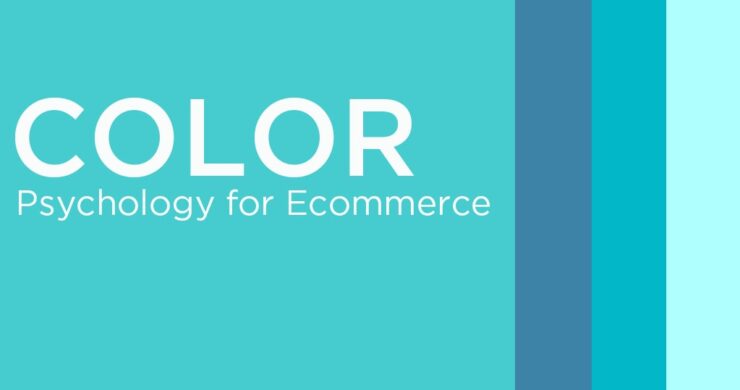A successful business nowadays requires an online website, especially in the Internet age. However, building a website compelling enough to convert visitors into customers takes time. Color psychology is one element that is important to this project.
Understanding how it functions in the design of e-commerce websites is vital for a reliable B2B web developer assisting companies in building an online presence that appeals to their intended audience.
Color psychology explores how hues influence people’s feelings, thoughts, and behavior. Businesses can enhance user experience, raise brand awareness, and boost revenue by using the appropriate colors to create their websites.
Understanding the Meaning of Colors

Understanding the meaning of each hue is crucial before delving into how colors might affect the design of a website. Different hues can cause different feelings and responses in customers.
For instance, Reds and blues are frequently linked to trust, security, and tranquility, whereas red is also connected with passion, intensity, and urgency. When selecting a good coloring scheme for their website, businesses may make educated judgments by knowing the meaning of each hue.
Green is a common preference for online business websites providing environmentally friendly goods or health supplements because it is frequently connected with nature, growth, and health.
Purple is frequently related to wealth, style, and originality. It’s a well-liked option for online companies selling expensive goods or services.
Yellow is frequently linked to joy, coziness, and optimism. It’s a well-liked option for e-commerce websites selling goods or services, encouraging joyful feelings.
How Colors Affect Consumer Behavior

Consumer behavior can be significantly affected by color. Research shows up to 90% of buyers’ initial product evaluations are based only on its hues. Colors can arouse emotions, build a brand’s identity, and affect consumer choices. For online business websites advertising financial goods and services, employing a blue color scheme as an example might foster a feeling of security and trust. On the other hand, e-commerce websites that use red may sell limited-time specials or flash sales since it conveys a purpose of haste.
Selecting Colors for Your Online Business Website
When selecting shades for an online business website, assessing the intended audience and the company’s individuality is crucial. The coloring scheme should be attractive to the intended audience and uniform with the goals and values of the brand. For instance, a company offering eco-friendly products can employ a green coloring scheme to reflect its brand’s values and draw customers who share them.
It is also essential to view the website through the eyes of the visitor, as designing a financial service website with a vivid scheme might not be suitable. Similarly, building a children’s toy website with a dull coloring strategy would appear less attractive. Hence, businesses need to know their intended audience.
Best Approaches for Using Colors in Online Business Website Design

When using colors for the layouts of websites, it is essential to keep some critical practices in mind:
Color Scheme: Pick an eye-pleasing scheme. An overly solid or contrasting scheme could be overbearing and damage the user experience.
Distinct Visuals: Use color to establish a specific visual hierarchy. It uses various hues to pull attention to other website features, including call-to-action buttons or product images.
Consistent Coloring Scheme: The coloring scheme of the website needs to be constant. The constant use of color may positively affect the user experience.
Accessible the hue palette: Providing a format that those who are color blind or have other visual impairments can see and readily read the color scheme is required.
Examples of E-commerce Websites with Influential Color Schemes
Many prosperous e-commerce companies base their coloring schemes on color psychology. One of these is the website for the skincare brand Glossier. Soft pink, commonly associated with femininity and youth, dominates the coloring scheme of the website. The brand’s intention to promote self-care and well-being is consistent with how certain shade promotes calm and relaxation.
Another one of these is the website for the outdoor shop Patagonia. The website’s coloring scheme is green in keeping with the business’s dedication to environmental sustainability and conservation. The outdoor enthusiasts who comprise the brand’s intended demographic will relate to its intent of adventure and the great outdoors.
The coloring scheme of the website needs to be constant. The constant use of color may positively affect the user experience.
It’s essential to have an accessible coloring palette so those who are color blind or have other visual impairments can see and readily read the color scheme required.
The Impact of Color Psychology on E-commerce Sales

Sales can be significantly impacted by designing e-commerce websites with color psychology in mind. According to studies, color may increase brand recognition by up to 80%, and up to 85% of consumers cite shades and hues as their top deciding factor. Businesses can increase brand recognition and revenue by creating a coloring scheme that appeals to the target market and symbolizes the company’s values.
Certain hues may also influence how valuable people consider a product to be. For example, a product’s perceived value can be increased by combining elegance and refinement, like black and gold. But for e-commerce companies that sell pretty-priced goods and services, a striking color palette might imply accessibility and affordability.
Tools and Resources for Choosing Colors for Your E-commerce Website
Businesses can choose a good coloring scheme for their e-commerce website using various tools and resources. Adobe Color is one well-liked application that enables users to design unique coloring schemes based on their brand’s values and target market. Coolors is another well-liked tool that creates coloring schemes based on user preferences and suggests complementary hues.
When developing an e-commerce website, it’s crucial to consider the cultural significance of colors. The coloring scheme must be appropriate for the intended audience because different hues might have different meanings in various cultures.
Common Color Mistakes to Avoid in E-commerce Website Design

Although certain hues can significantly impact the appearance of an e-commerce website, there are several typical blunders to avoid.
One of the most prevalent mistakes is using too many colors; it becomes distracting and lowers the overall quality of the user experience.
Choosing a coloring strategy that is at odds with the objective or values of the company is another frequent mistake. It could confuse and harm the company’s reputation.
Everyone who uses the system, including those with visual impairments, must be able to see the color scheme. Users with disabilities may be disadvantaged if the color scheme is difficult to read or provides insufficient contrast.
Conclusion
In conclusion, for companies trying to have a captivating and engaging online presence, knowing the significance of color psychology in e-commerce website design is crucial. Businesses may enhance brand awareness, boost revenue, and improve user experience by using the right colors to create their websites.
It’s critical to consider the target demographic, brand identity, and viewing environment when selecting colors for an e-commerce website. Businesses may build a visually appealing and successful e-commerce website that connects with their target audience by adhering to best practices and avoiding common blunders when designing.




























